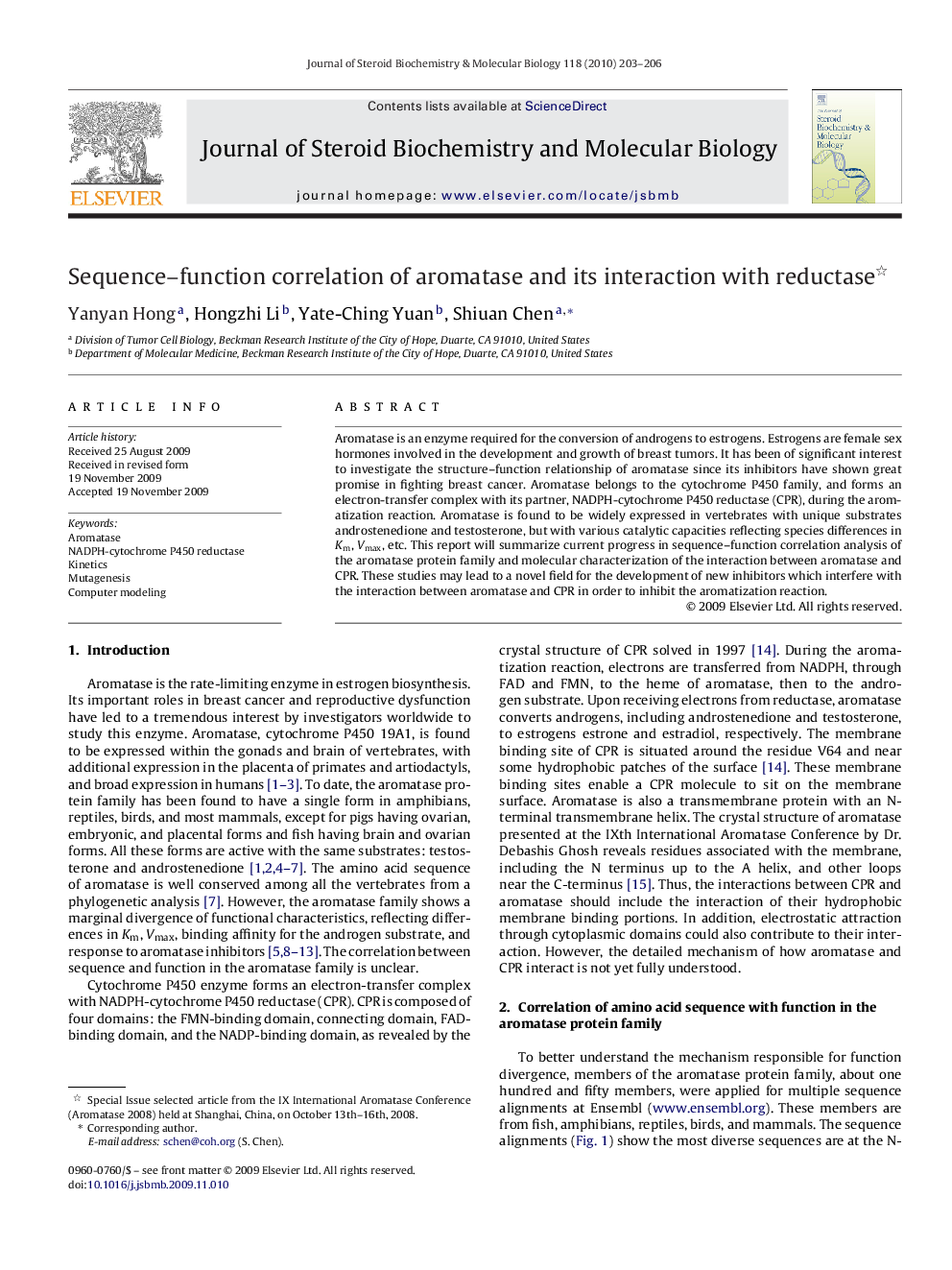| Article ID | Journal | Published Year | Pages | File Type |
|---|---|---|---|---|
| 1992109 | The Journal of Steroid Biochemistry and Molecular Biology | 2010 | 4 Pages |
Aromatase is an enzyme required for the conversion of androgens to estrogens. Estrogens are female sex hormones involved in the development and growth of breast tumors. It has been of significant interest to investigate the structure–function relationship of aromatase since its inhibitors have shown great promise in fighting breast cancer. Aromatase belongs to the cytochrome P450 family, and forms an electron-transfer complex with its partner, NADPH-cytochrome P450 reductase (CPR), during the aromatization reaction. Aromatase is found to be widely expressed in vertebrates with unique substrates androstenedione and testosterone, but with various catalytic capacities reflecting species differences in Km, Vmax, etc. This report will summarize current progress in sequence–function correlation analysis of the aromatase protein family and molecular characterization of the interaction between aromatase and CPR. These studies may lead to a novel field for the development of new inhibitors which interfere with the interaction between aromatase and CPR in order to inhibit the aromatization reaction.
